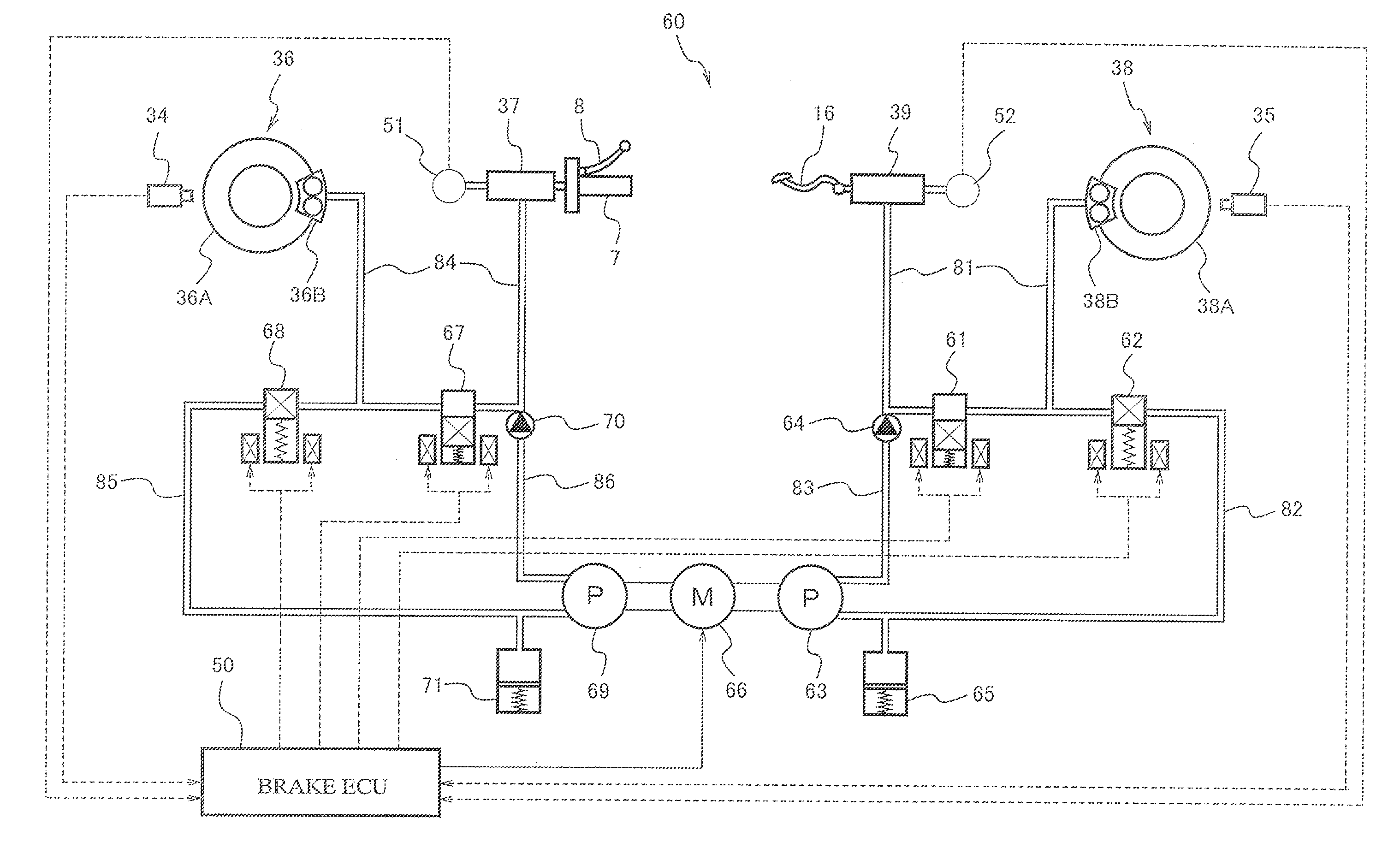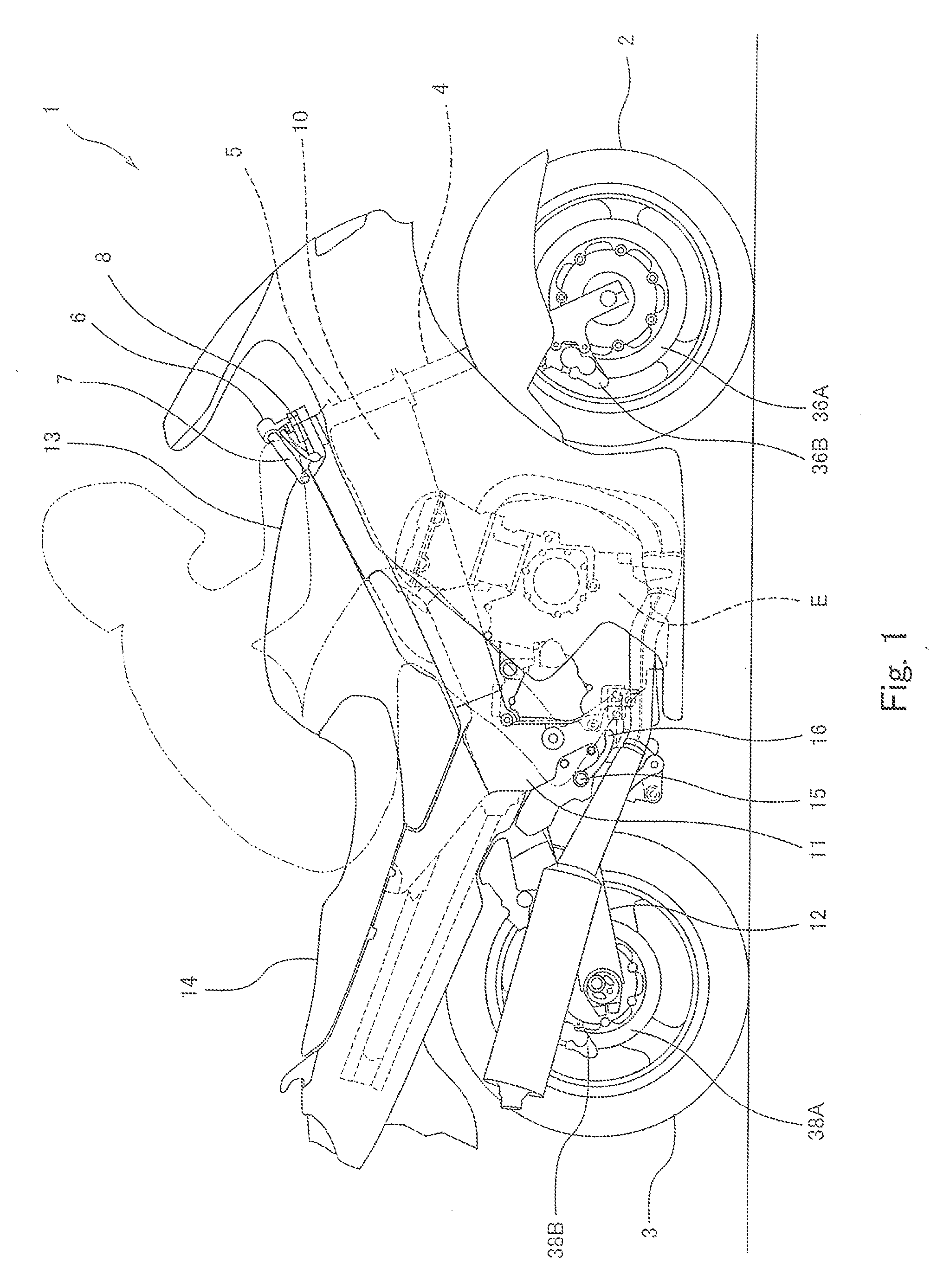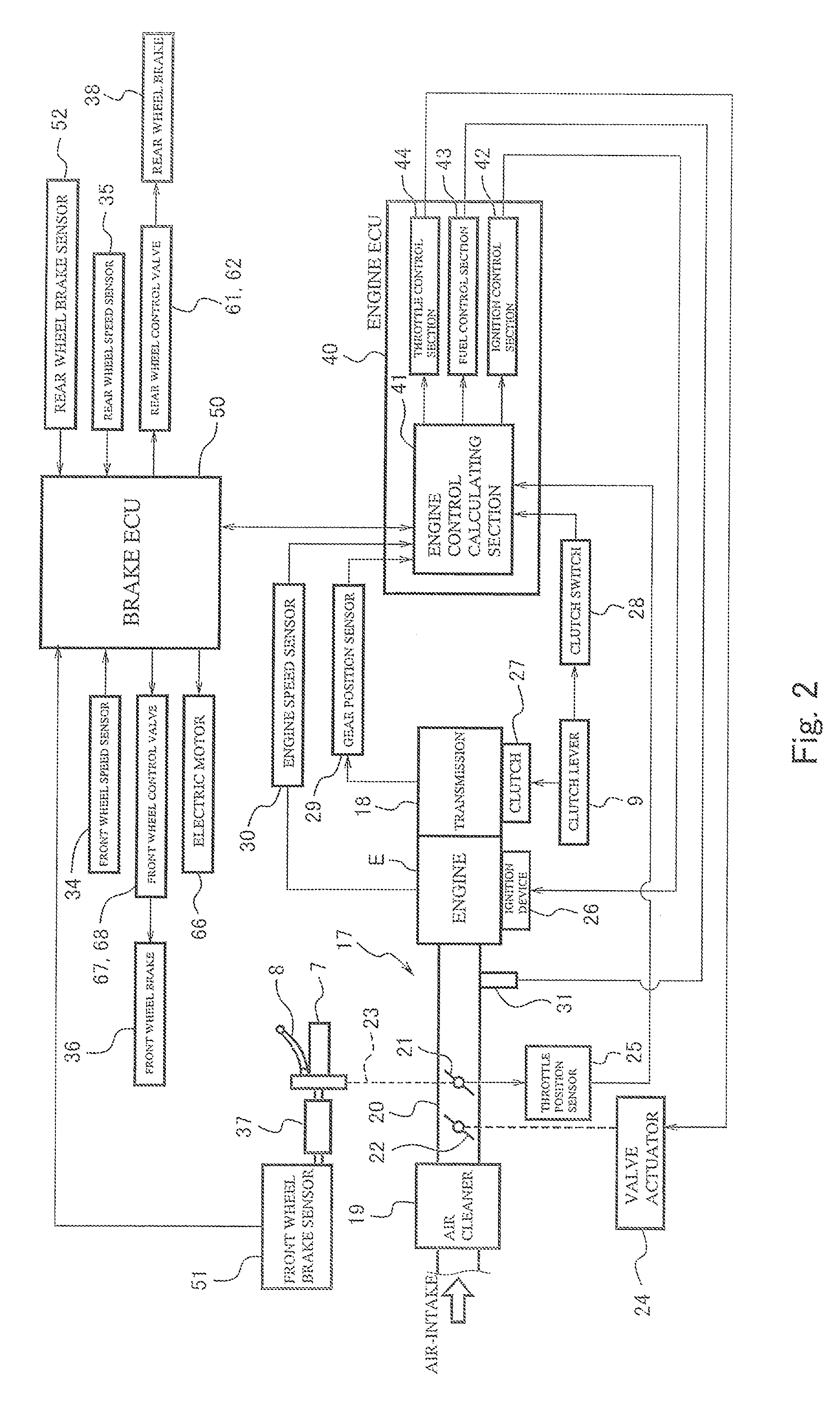Brake control system in vehicle
a technology of brake control system and vehicle, which is applied in the direction of braking system, process and machine control, instruments, etc., can solve the problems of vehicle body collapse, abs control cannot be initiated at a proper timing, and vehicle cannot be effectively steered
- Summary
- Abstract
- Description
- Claims
- Application Information
AI Technical Summary
Benefits of technology
Problems solved by technology
Method used
Image
Examples
embodiment 1
[0042]FIG. 1 is a right side view of a motorcycle 1 according to the embodiment of the present invention. As shown in FIG. 1, the motorcycle 1 includes a front wheel 2 which is a driven wheel and a rear wheel 3 which is a drive wheel. The front wheel 2 is rotatably mounted to a lower end portion of a front fork 4 extending substantially vertically. The front fork 4 is mounted to a steering shaft (not shown) via a pair of upper and lower brackets (not shown). The steering shaft is rotatably supported by a head pipe 5 provided on a vehicle body.
[0043]A bar-type steering handle 6 extending in a rightward and leftward direction is attached to the upper bracket coupled to an upper end of the front fork 4. The driver steers the steering handle 6 to steer the front fork 4 and the front wheel 2. A front wheel brake caliper 36B is mounted to a lower end portion of the front fork 4 such that the brake caliper 36B seizes a front wheel brake disc 36A rotatable together with the front wheel 2. T...
embodiment 2
[0107]Hereinafter, Embodiment 2 of the present invention will be described. In Embodiment 2, the threshold ΔVf*, ΔVr* used to determine whether or not to initiate the ABS control in the first determiner section 54 is changed, based on the driving state of the motorcycle 1. The other constituents are identical to those of Embodiment 1. Therefore, they are identified by the same reference symbols and will not be described.
[0108]In the present embodiment, the driving state detector section 53 in the brake ECU 50 changes the threshold ΔVf*, ΔVr* based on a magnitude of the brake pressure P or change in the brake pressure P. For example, based on the change in the brake pressure P, the driving state detector section 53 detects that the driver has performed a quick brake operation. According to this, the driving state detector section 53 changes the threshold ΔVf*, ΔVr* to enable the ABS control to be initiated more easily.
[0109]To this end, a new step is provided between step S7 and step...
embodiment 3
[0118]Hereinafter, Embodiment 3 of the present invention will be described. In Embodiment 3, the threshold ΔVf*, ΔVr* used to determine whether or not to initiate the ABS control is changed based on the wheel speed decrease rate ΔVf, ΔVr calculated in the first determiner section 54 during braking. The other constituents are identical to those of Embodiment 1. Therefore, they are identified by the same reference symbols and will not be described.
[0119]In the present embodiment, as indicated by a downward arrow L3 of FIG. 10A, when the decrease rate ΔVr of the rear wheel speed Vr increases and exceeds a standard decrease rate on the braking characteristic line B, i.e., becomes below the braking characteristic line B, as a result of the brake operation, the threshold ΔVf* may be changed such that the threshold ΔVf* is smaller as a value of a difference α between the standard decrease rate corresponding to the brake pressure P at that point of time and the decrease rate ΔVr (actual dec...
PUM
 Login to View More
Login to View More Abstract
Description
Claims
Application Information
 Login to View More
Login to View More - R&D
- Intellectual Property
- Life Sciences
- Materials
- Tech Scout
- Unparalleled Data Quality
- Higher Quality Content
- 60% Fewer Hallucinations
Browse by: Latest US Patents, China's latest patents, Technical Efficacy Thesaurus, Application Domain, Technology Topic, Popular Technical Reports.
© 2025 PatSnap. All rights reserved.Legal|Privacy policy|Modern Slavery Act Transparency Statement|Sitemap|About US| Contact US: help@patsnap.com



